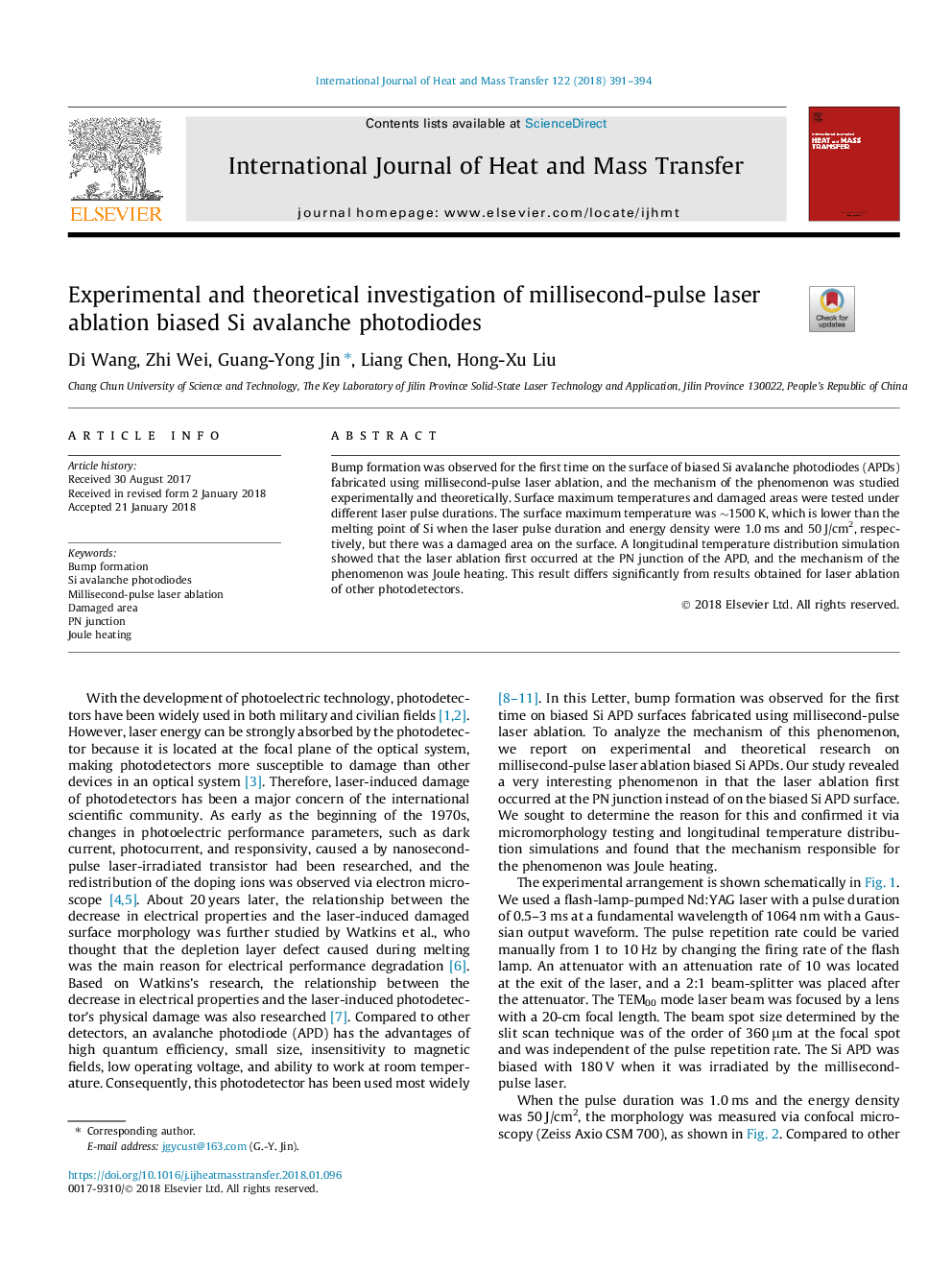| Article ID | Journal | Published Year | Pages | File Type |
|---|---|---|---|---|
| 7054377 | International Journal of Heat and Mass Transfer | 2018 | 4 Pages |
Abstract
Bump formation was observed for the first time on the surface of biased Si avalanche photodiodes (APDs) fabricated using millisecond-pulse laser ablation, and the mechanism of the phenomenon was studied experimentally and theoretically. Surface maximum temperatures and damaged areas were tested under different laser pulse durations. The surface maximum temperature was â¼1500â¯K, which is lower than the melting point of Si when the laser pulse duration and energy density were 1.0â¯ms and 50â¯J/cm2, respectively, but there was a damaged area on the surface. A longitudinal temperature distribution simulation showed that the laser ablation first occurred at the PN junction of the APD, and the mechanism of the phenomenon was Joule heating. This result differs significantly from results obtained for laser ablation of other photodetectors.
Keywords
Related Topics
Physical Sciences and Engineering
Chemical Engineering
Fluid Flow and Transfer Processes
Authors
Di Wang, Zhi Wei, Guang-Yong Jin, Liang Chen, Hong-Xu Liu,
